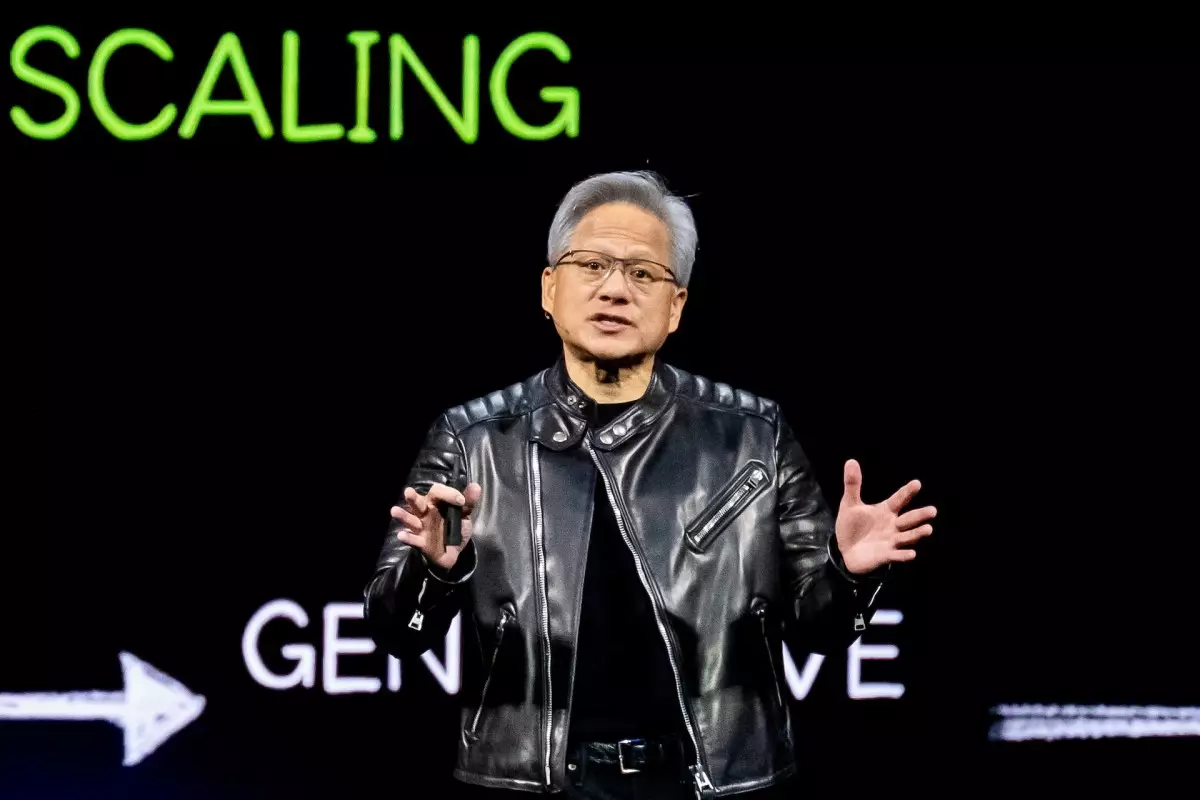Nvidia’s recent announcement regarding the establishment of over a million square feet of manufacturing space in Arizona and Texas signifies a pivotal shift in the American semiconductor industry. Driven by an essential need to enhance local production capabilities, Nvidia is positioning itself as a leader in the AI chip sector. This move promises not only to fortify supply chains but also to ignite a renaissance of job creation and economic growth in the United States. As AI continues to infiltrate various sectors, Nvidia’s commitment to American manufacturing marks a significant response to rising demand for such technology.
A New Era of AI Infrastructure
At the core of this initiative is Nvidia’s production of its Blackwell chips in collaboration with TSMC in Phoenix. By diversifying manufacturing locations and methodologies, Nvidia plans to mitigate any supply chain disruptions that have plagued its industry. The construction of “supercomputer” manufacturing plants in Texas, in partnership with established firms like Foxconn and Wistron, underlines their strategic approach to meeting burgeoning market needs. The expected ramp-up of mass production within the next 12-15 months illustrates a proactive approach to address the exponential growth of the AI landscape.
Nvidia’s CEO Jensen Huang articulated the company’s vision, stating, “The engines of the world’s AI infrastructure are being built in the United States for the first time.” This assertive statement reinforces the importance of bringing manufacturing back to American soil. The decision to boost local production creates a buffer against global uncertainties and enhances national security by reducing reliance on foreign manufacturing.
Economic Promise Amidst Challenges
Nvidia’s ambitious plans do not come without their challenges. The company claims its U.S.-based manufacturing could generate “hundreds of thousands” of jobs and catalyze “trillions of dollars” in economic activity. Nevertheless, the road ahead is fraught with hurdles, including China’s retaliatory trade policies that threaten the supply of essential raw materials for chip production. Furthermore, the current shortage of skilled workers in manufacturing roles compounds these challenges, making it imperative that initiatives focused on training and workforce development accompany these ambitious plans.
Additionally, the backdrop of political maneuvering—coupled with economic policy changes—could significantly influence the execution of Nvidia’s vision. The administration’s geopolitical strategies create an environment that could deter potential investments. As seen with previous exhortations to firms like TSMC, compliance with domestic manufacturing policies might not be voluntary, raising the stakes for companies dependent on U.S. markets.
Strategic Partnerships in an Evolving Landscape
The strategic partnerships involving Nvidia represent not only a necessity but also an opportunity. Collaborations with local entities such as Amkor Technology and SPIL for packaging and testing signify an integrated approach to manufacturing. By forging these alliances, Nvidia is ensuring that various facets of production are handled proficiently, driving down costs and improving efficiency. This ecosystem of collaboration is crucial for maintaining a competitive edge in a fast-evolving industry.
Moreover, Nvidia’s engagement with administrations that favor domestic production aligns with wider industry trends where other companies are following a similar path. Initiatives taken by OpenAI and Microsoft to invest significantly in American data centers echo Nvidia’s strategy. This collective movement towards bolstering domestic infrastructure reflects an industry-wide acknowledgment of the need for a resilient supply chain in the face of escalating global competition.
The Future of AI and Technological Sovereignty
As we stand on the brink of a technological renaissance, Nvidia’s bold steps in chip manufacturing can be seen as a harbinger of a new era of power dynamics within the AI industry. The company’s insistence on ramping up local production could instigate policy shifts that favor technological sovereignty and self-reliance. An empowered America in chip manufacturing may not only secure its economic future but also position it as a formidable player in the global AI race.
It’s crucial to monitor how Nvidia navigates political, social, and economic landscapes in pursuit of its goals. The success of these endeavors may redefine not only the American semiconductor industry but could have broader implications on international trade, labor markets, and the future of technological innovation. Such developments will ultimately test the resilience of an industry poised for unprecedented growth but shadowed by complex geopolitical considerations.

